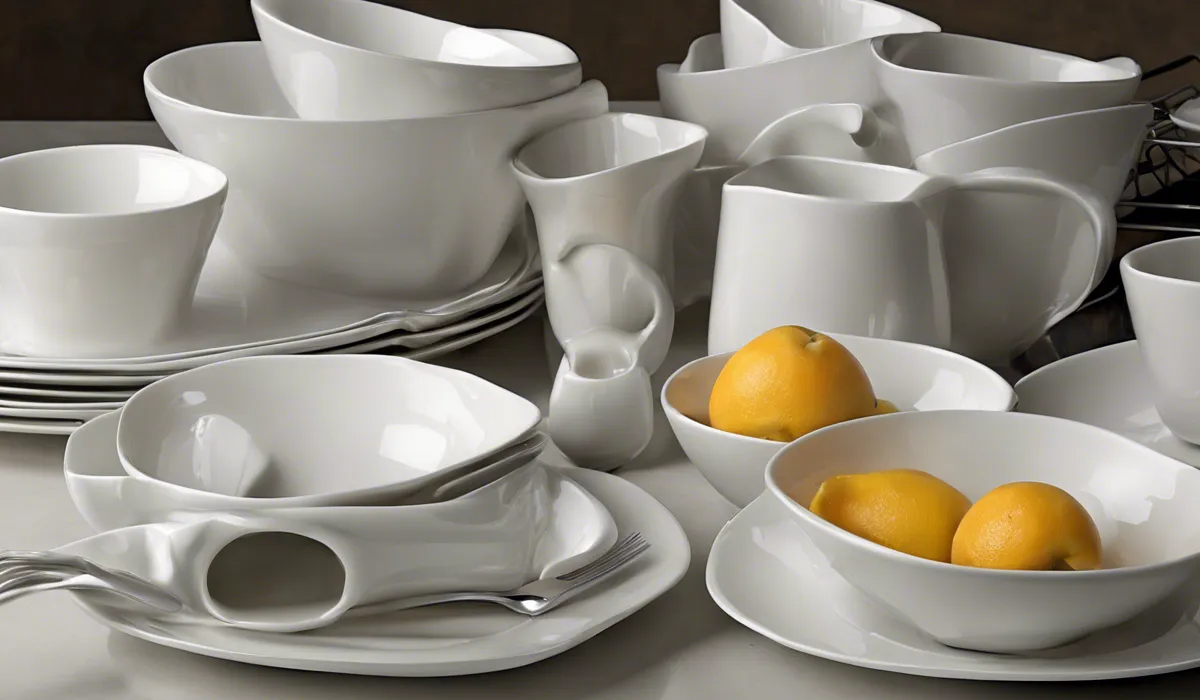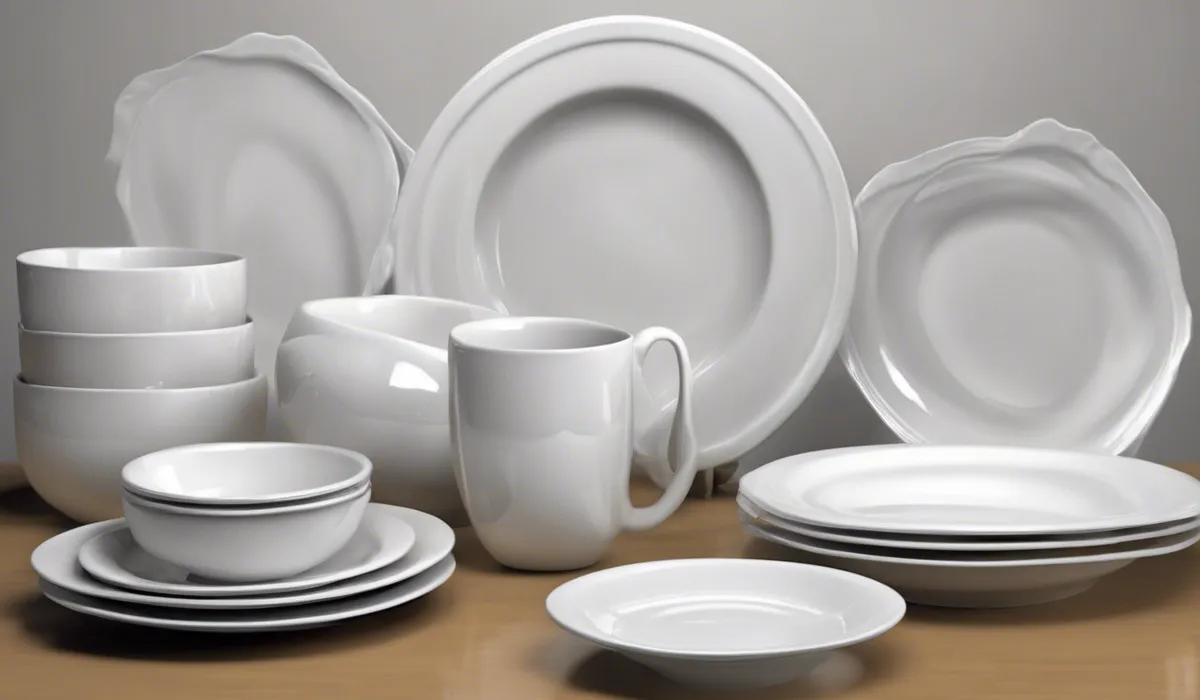What Should Be Done With Dishware Before Washing It in a Dishwasher: Pre-Rinse Rules!
Before washing dishware in a dishwasher, scrape off large food particles, and remove any leftover solids. Pre-rinsing under tap water is not necessary. Ensure that dishes are dishwasher-safe and place them correctly in the racks for optimal cleaning.
Pre-Rinsing and Scraping

Importance of Removing Solid Food Remnants
Before placing your dishes in the dishwasher, it’s essential to remove solid food remnants.
Doing so prevents clogs, enhances cleaning effectiveness, and maintains the dishwasher’s performance. Solid particles can block the spray arms and filters, leading to poor washing results and potential repairs.
Pre-rinsing: When It’s Necessary and When It’s Not
Pre-rinsing dishes under tap water might seem like a good practice, but it is often unnecessary and wasteful.
Modern dishwashers are designed to handle a certain level of soiling. Pre-rinsing is only needed if the food is dried and stuck on the dishware or if you aren’t running the dishwasher immediately.
The Debate Over Pre-rinsing: Water Conservation vs. Ensuring Cleanliness
There is a significant debate on whether pre-rinsing dishes is beneficial. Water conservationists argue that pre-rinsing wastes a substantial amount of water.
On the other hand, some people believe it ensures a higher level of cleanliness. However, with advanced dishwasher technology, the need for pre-rinsing has drastically decreased.
Scraping Off Leftovers: Tools and Techniques
To remove leftovers effectively, use a rubber spatula or a dish scraper. These tools help in quickly getting rid of food particles without damaging your dishware. Avoid using sharp objects as they may scratch and damage your dishes.
Environmental Considerations: Reducing Water Usage
Reducing water usage is crucial for the environment. By scraping off food remnants and avoiding unnecessary pre-rinsing, you can save gallons of water each year, contributing to a more sustainable living practice.
Loading the Dishwasher Correctly

Understanding Your Dishwasher’s Manual and Loading Guidelines
It’s important to read and understand your dishwasher’s manual. Manufacturers provide specific guidelines on how to load your dishwasher correctly. This ensures that you make the most of its features and achieve the best possible cleaning results.
Placement Strategy for Dishware: Plates, Bowls, and Serving Dishes
Plates should be placed vertically in the bottom rack, while bowls and serving dishes go on the top rack at an angle to allow water to reach all surfaces. Ensure that the soiled surfaces face the spray arms for effective cleaning.
Utensil Arrangement: Mixed or Separated, Handle Up vs. Handle Down
Utensils can be mixed to prevent nesting or separated by type for easier unloading.
The debate of handle up vs. handle down depends on safety and cleanliness; sharp knives should always go handle up for safety, while other utensils can be placed handle down to expose the dirty end to the spray.
Positioning Glassware and Cups for Optimal Washing and to Prevent Breakage
Glassware and cups should be placed on the top rack, angled to allow water to run off and prevent pooling. This positioning also minimizes the risk of breakage during the wash cycle.
The Importance of Not Overcrowding and Ensuring Spray Arm Movement
Avoid overcrowding the dishwasher. This ensures that the spray arms can move freely, and water and detergent can reach all surfaces. Overcrowding can lead to poorly cleaned dishes and the need for additional wash cycles.
Pre-Treatment and Use of Detergents

Types of Detergents: Pods, Powders, Liquids, and Their Proper Use
Dishwasher detergents come in pods, powders, and liquids. Pods offer convenience and pre-measured detergent, while powders and liquids can be adjusted for the size of the load. Use the type that works best for your dishwasher and cleaning needs.
Pre-treatment Products for Tough Stains
For tough stains like coffee or lipstick, pre-treatment products can be applied to the affected areas before loading.
These products help break down stubborn stains and ensure a thorough clean.
Proper Dosage of Dishwasher Detergent
Using the correct amount of detergent is crucial. Too little and your dishes may not get clean; too much and you may get residue and waste detergent. Refer to your dishwasher’s manual for the recommended dosage.
The Role of Rinse Aids for Spotless Drying
Rinse aids help water to sheet off dishware, preventing spots and ensuring a dry, streak-free finish. They are especially useful in areas with hard water.
The Impact of Hard Water on Dishware and Appliance Maintenance
Hard water can leave mineral deposits on dishes and the dishwasher components. Using a water softener or a detergent designed for hard water can prevent these issues and keep your dishwasher running smoothly.
FAQs About Preparing Dishware for Dishwashers
Do I need to scrape food off dishware before placing it in the dishwasher?
Yes, you should scrape off large food particles and remove any leftover solids before placing dishware in the dishwasher.
Is pre-rinsing dishware under tap water necessary before using the dishwasher?
No, pre-rinsing dishware under tap water is not necessary before loading it into the dishwasher.
How can I tell if my dishes are dishwasher-safe?
Check the manufacturer’s instructions or labels on the dishware to ensure they are marked as dishwasher-safe.
What is the correct way to place dishes in the dishwasher for optimal cleaning?
Place dishes in the racks according to the dishwasher’s design, ensuring that they are spaced out and angled properly for water spray and detergent access.
Can I put all types of dishware in the dishwasher?
Not all dishware is suitable for the dishwasher; always verify that items are dishwasher-safe before loading them into the machine.
Final Thoughts
Before placing dishware in a dishwasher, it’s essential to remove large food particles and any remaining solids.
There’s no need to pre-rinse dishes under tap water, but it is crucial to confirm they are dishwasher-safe. Proper placement within the racks ensures dishes are optimally positioned for thorough cleaning.





